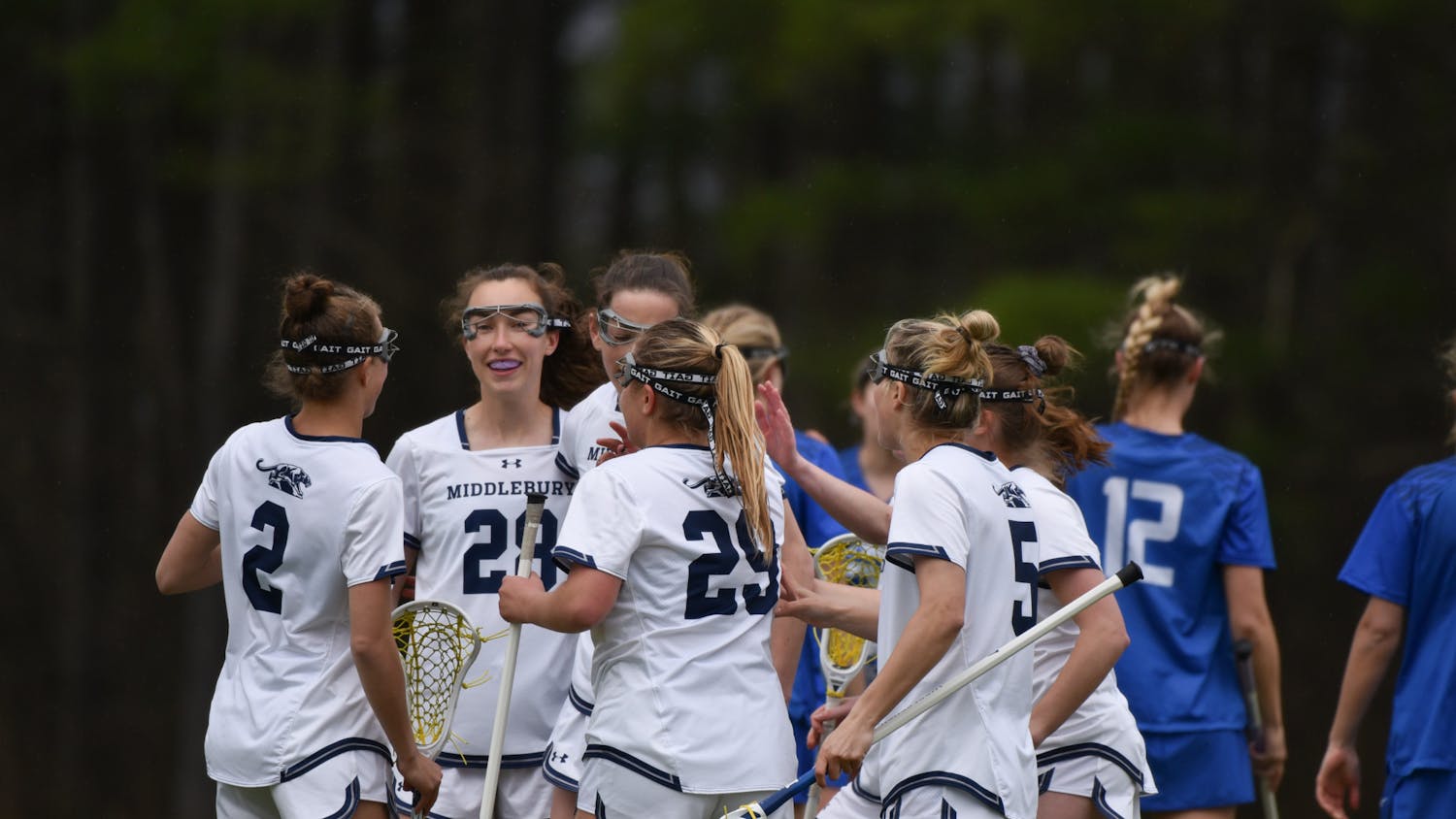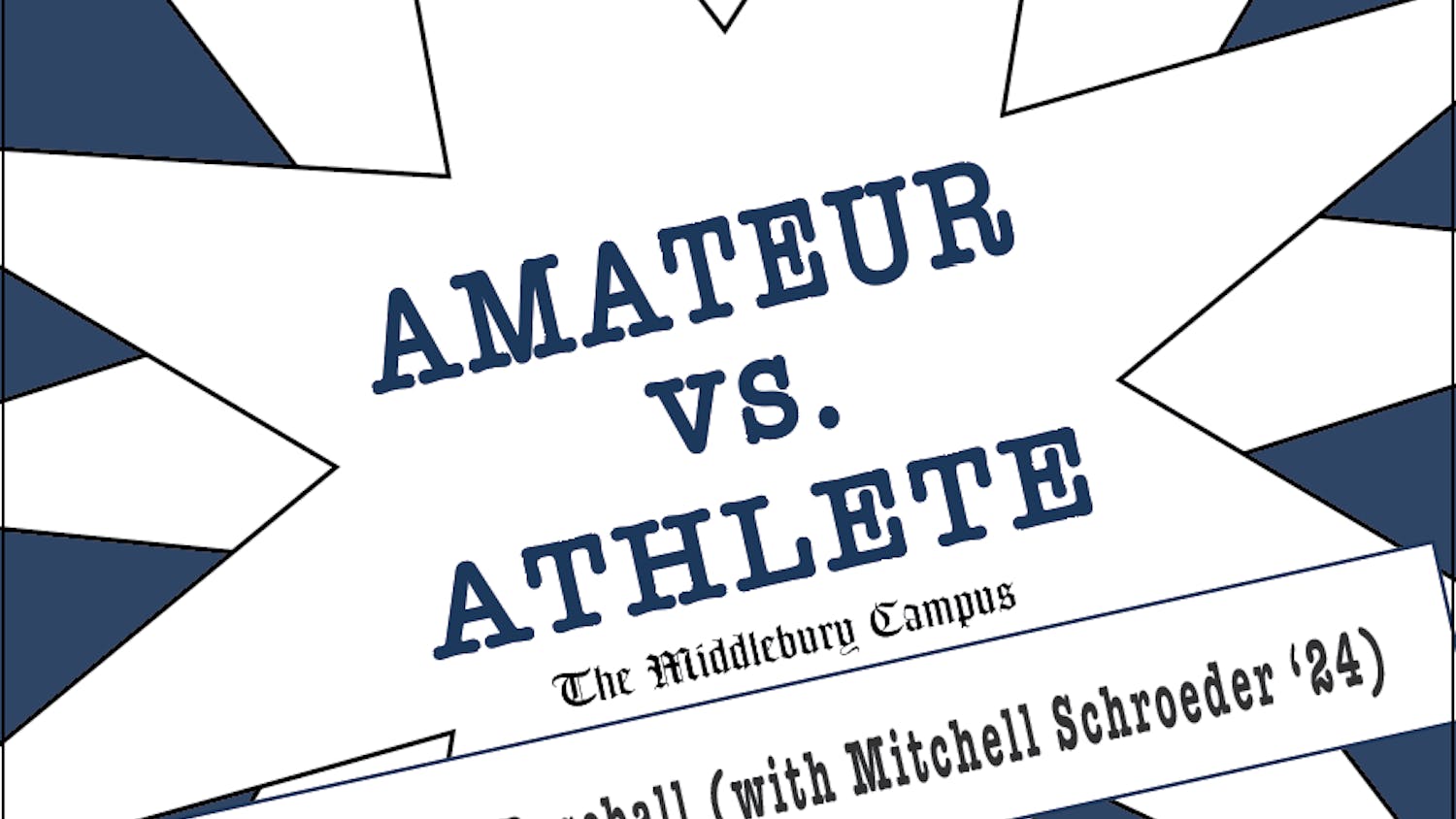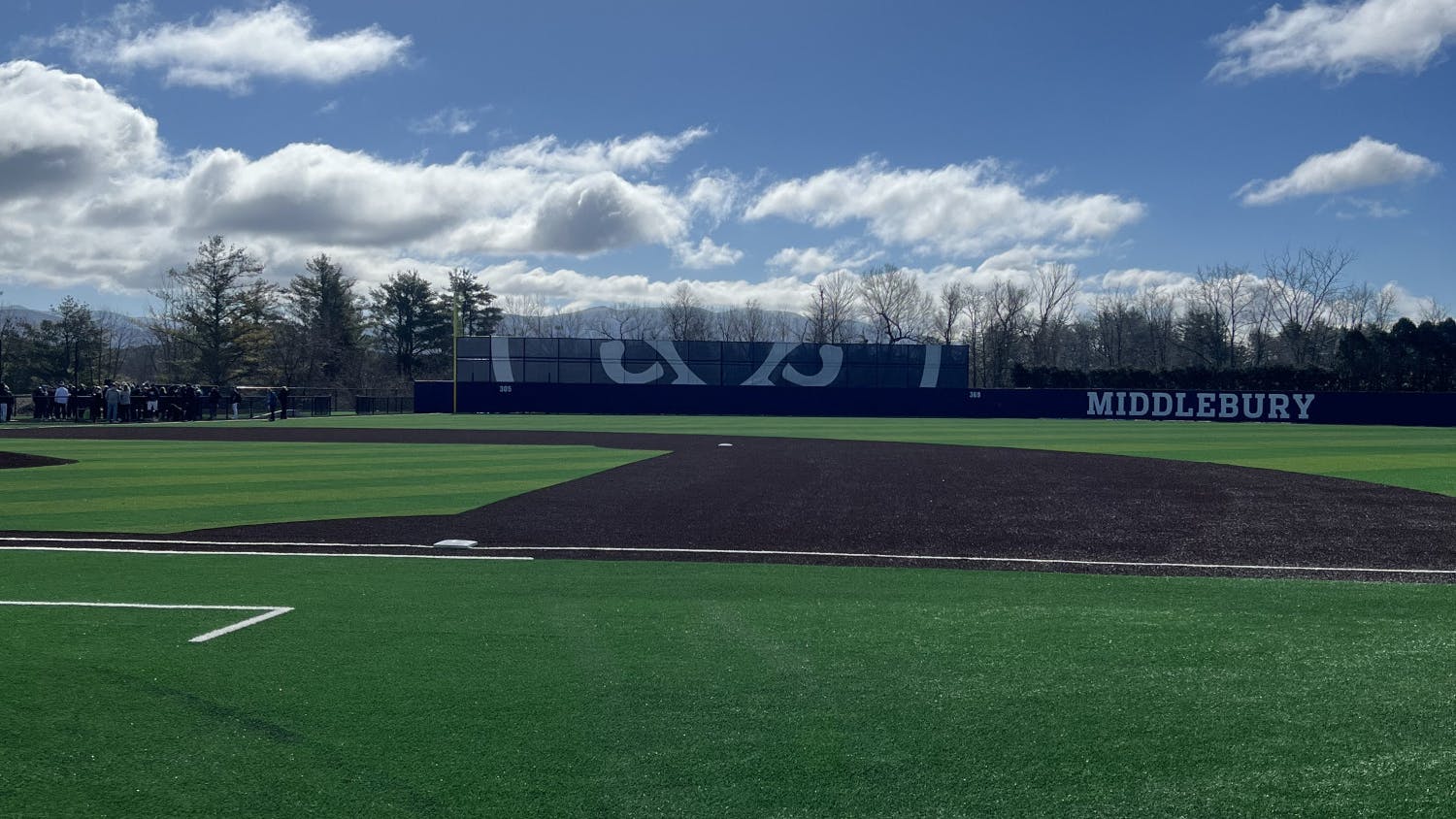On Sunday, Sept. 24, Pittsburgh Steelers left tackle Alejandro Villanueva came to embody, in an unexpected way, the height of the racial conflict that has embroiled the NFL for the past year. Embody, not because he is black or particularly affected by racial injustice in America — Villanueva is of Spanish descent, and has never publicly spoken of himself as a target of discrimination — but because he felt the utmost degree of pressure from both sides of the conflict.
Villanueva is a veteran of the U.S. Army who served three tours in Afghanistan before beginning his NFL career. Prior to that Sunday’s contest against the Chicago Bears, Steelers head coach Mike Tomlin had given his players the freedom to decide how, or even if, they would protest during the anthem. Wanting neither to belittle the struggles of millions of people of color, nor to take an action that they worried would send the wrong message, the players ultimately decided under the leadership of captains Ben Roethlisberger and Cam Heyward that “the only course of action was to go inside and remove ourself [sic] from the situation,” in Villanueva’s words. They planned to remain in the tunnel for the duration of the anthem.
Afterwards, Villanueva expressed a sincere regret for what followed. “After the meeting,” he said, “based on my unique circumstances and based on the fact that I’ve served in the Army and pretty much that my life is lived through the military, I asked Ben [Roethlisberger] if there was a way I could watch the national anthem from the tunnel, and he agreed. He said the captains will be out there right behind me, so this plan morphed to accommodate this tough, moral dilemma that I had in my hands to where the players can be behind me in the tunnel.”
Except when it came time for the anthem to take place, Villanueva’s actions had unintended consequences. He walked out until he could see the flag from the tunnel and, as the anthem was about to begin, turned around to motion to the rest of his teammates to join him. But the hustle and bustle of stadium personnel in the tunnel came between Villanueva and the rest of his teammates: by the time the commotion had cleared, the anthem was already underway.
To say that Villanueva felt it important to honor the flag would be an understatement. For him personally, not standing for the anthem would be almost unthinkable. “At the end of the day,” he said, “it happens all the time: people die for the flag. There’s no way else to put it. When somebody’s about to go on a mission … there’s nothing else that’s going to justify other than the men to the left and right dying for that mission.
“I wish I could stay home. I wish we could all play ‘Call of Duty’ and not have to go to war. Some men, some women, sign up for this tough challenge, and they have to do it for the flag. When I see a flag of a mission on the shoulder of a soldier that reminds me that that guy’s with me. It reminds me that I have to fight and lay my life down for him. Whether it’s in my unit, whether it’s Army, Navy, Marine Corps, Coast Guard, it doesn’t matter. You’re going to have a flag on your shoulder, I’m going to identify that, and we’re fighting for each other. So that’s what the flag means to me, that’s what the flag means to a lot of veterans. The national anthem, it means a lot to them, it means a lot to me. I think my teammates respected this thoroughly.”
But that’s not the message that NFL fans got right away. The unintended consequence of Villanueva’s commitment consisted in the enduring image of him standing alone, hand over his heart, just on the threshold of the tunnel and completely apart from his teammates. The photo was immediately and fervently circulated throughout the media. Demand for Villanueva’s jersey skyrocketed, as it quickly became the highest selling over the next few days.
Nevertheless, Villanueva couldn’t have been more upset with the attention he received. Many Steelers, including Tomlin himself, expressed their disappointment in the way he had handled the situation. In turn, Villanueva felt he had betrayed the trust of his teammates and, by extension, misrepresented their values and common brotherhood on the national stage. “That is the very embarrassing part of my end in what transpired,” he later said, “because when everybody sees an image of me standing by myself, everybody thinks that the team, the Steelers, are not behind me, and that’s absolutely wrong.
“It’s quite the opposite. They all would have… actually the entire team would have been out there with me, even the ones who wanted to take a knee would have been with me had they known these extreme circumstances that at Soldier Field [where the Bears play], in the heat of the moment, when I’ve got soldiers, wounded veterans texting me that I have to be out there, I think everything would have been put aside, from every single one of my teammates, no doubt.
“So because of that, I’ve made Coach Tomlin look bad, and that is my fault, and that is my fault only. I made my teammates look bad, and that is my fault, and my fault only. And I made the Steelers also look bad, and that is my fault, and my fault only. So unwillingly, I made a mistake. I talked to my teammates about the situation. Hopefully they understand it. If they don’t, I still have to live with it, because the nature of this debate is causing a lot of very heated reaction from fans from players, and it’s undeserving to all of the players and coaches from this organization.”
Villanueva’s story leaves us with quite a bit to unpack. There are the obvious questions: to what extent was the onus on him to make sure the whole team knew about his plans to view the flag ahead of time? Should he have stepped back into the tunnel? If not, what should he have done differently? The speculations in his account raise the question of hearsay, too: How accurately did he portray the thoughts and feelings of his teammates in his interview, especially when he asserted that they would’ve been behind him? If he strayed from the truth, was it intentional or unintentional? And most of all, we might find ourselves asking: Amidst all the uproar surrounding the kneeling protests in the NFL, the express aim of which is to call attention to the unjust treatment of black individuals in American society, is it fair to begin our discussion with the actions of somebody who made it a point not to participate in the protest?
Of course, we’ve thrown any impartiality regarding the last question out the window by the very fact of our discussing Villanueva’s story. But properly considered, his example gives us insight into a much broader set of questions, ones that run deeper than just one man, one team, or one game. It puts the very fabric of American society under the microscope. It reminds us of our uncomfortable past, the mistreatment of black Americans that stretches back to this country’s foundation. It undermines every attempt we make to pretend that our abuses died with the 13th Amendment or the Civil Rights Act, all the more so in the context of a sport in which 70 percent of the players are black but 83 percent of the fans are white. Most of all, it calls into question our very definition of patriotism and its place in America’s future. Villanueva was awarded a Bronze Star for his military service and fits the traditional definition of “patriot” to a T: if he was wrong to stand before the anthem as he did, ostensibly earnest as he was, then what does that mean for the vast majority of us who have been doing the same?
In short, the issue lies at the intersection of America’s history of racism, obsession with sports, and particular brand of patriotism. Individually, all three are unique to our country. The conflict they have combined to form is even more intricate and delicate. We’ve hardly made any attempt to keep the three separate, and now that they’ve come to a head, we don’t have any precedent to learn from in managing them.
For instance, it’s important to understand that no other country in the world has written patriotism into the rubric of its athletic identity to the degree that America has. From high school sports onward, we play our national anthem before the vast majority of our athletic competitions; at the professional level, it is never omitted. Except when competing as a country — for instance, when the French soccer team faces off against Germany — the rest of the world rarely does the same. They tend to deem it uncouth and self-aggrandizing. Of course, Americans might ask in response: Wasn’t it the same brazen patriotism that won us our independence, and upon which we founded our country?
And somewhere along the way, our athletic patriotism came to be associated with our military, too. Perhaps it was an inevitable consequence of American patriotism on the whole that we would come to associate it with sports. After all, the fact that we’ve fought to earn our freedom is almost inextricable from the very concept itself; our presence on a global scale is largely identified with the fighting we do on behalf of other countries’ freedom, too (or at least under the pretext thereof).
Or maybe our athletic patriotism had something to do with the fact that in the early to middle 20th century, when sports were becoming more and more commercialized, the young men we were watching on the field were the same ones being shipped off to war overseas. Whatever the cause, the proof is abundant. At stadiums across the country, extra care is given to recognize and celebrate military holidays, veterans in the crowd are regularly introduced to a standing ovation, and most of all, a military color guard traditionally presents the flag before the crowd is asked: Please rise and remove your caps for the singing of our national anthem.
It was in light of the above circumstances that Colin Kaepernick, once a starter but only a backup at the time, garnered widespread attention for his decision to remain seated for the anthem before a San Francisco 49ers preseason game on August 26, 2016. When asked by NFL Media about the motivation for his actions, Kaepernick didn’t mince words.
“I am not going to stand up to show pride in a flag for a country that oppresses black people and people of color,” he said. “To me, this is bigger than football and it would be selfish on my part to look the other way. There are bodies in the street and people getting paid leave and getting away with murder.”
The United States Constitution protected Kaepernick’s right to do so, just as it protected the rights of thousands of armchair pundits to criticize his decision — some in a more measured tone, and some with exaggerated, incendiary rhetoric. Although he might not have foreseen the magnitude of the ensuing firestorm — which only increased in pitch as athletes across the NFL, and soon across the country, joined the protest — Kaepernick likely anticipated that at least some individuals would take offense at his actions.
In the year that has passed since then, and especially in recent months, Kapernick’s supporters have accused his detractors of losing sight of the real issues at stake. They say that those claiming injury have a skewed sense of perspective. A flag may be under attack on one side, but on the other, human lives and livelihoods are at stake. Dolphins running back Arian Foster, who joined the protest on Sept. 11, 2016, summarized in a tweet: “Don’t let the love for a symbol overrule the love for your fellow human.” Have fun making a case that we should do otherwise.
But it is equally important to understand that any protest is a fundamentally imperfect enterprise. It is the symptom of a sick society, one riddled with injustice and oppression. Only when words fail do we turn to protest as a means of expression. As a result, it will necessarily introduce a disparity between the actions taken and the motivations behind them, some unintended meaning that the protest takes on by the fact — as a fundamentally drastic measure, one that resorts to offense because other means of discourse have proved ineffective.
Show me a protest in which nobody’s toes are stepped on, and I’ll show you a country in which there’s no reason to protest at all.
From this perspective, Foster’s comment might also take on a wholly different meaning. As soon as Kaepernick decided to sit out the national anthem last year, he turned himself into a symbol as well — an emblem of black courage and pride, of refusal to be silenced in the face of oppression that society has relentlessly swept under the rug. His image gave a voice to countless silent oppressed. But much in the same way that Kaepernick’s supporters are right to see a repressive subtext in the symbol of the American flag, his detractors aren’t entirely wrong take offense at some of the unintended implications of his actions. Some felt that Kaepernick’s decision gave the impression of obstinacy, of an unwillingness to take part in the great American enterprise about which they had fewer doubts than he. Others saw in his actions ingratitude toward the military, among them Villanueva himself: “I don’t know if the most effective way is to sit down during the national anthem with a country that’s providing you freedom, providing you $16 million a year . . . when there are black minorities that are dying in Iraq and Afghanistan for less than $20,000 a year,” he told ESPN in 2016.
Kaepernick’s protest took courage from the start. It is an even greater testament to his character and humility that he recognized some of the imperfections of his symbolic action. Although he had stated from the beginning that he had no ill will toward the military, he realized that words were not enough to change the content of his action. He sought out and met with former Green Beret and NFL long snapper Nate Boyer for advice on how to sharpen his message. He decided to change his protest from a sitting one, which appeared passive and disinterested to some, to a kneeling one, which many felt showed much more respect for the flag and what it represents. There may always be a space between our words and our actions, but it is never out of our power to constantly reevaluate that gap and to minimize it as much as we can.
And in the same vein, we ought to praise Villanueva for showing much of the same self-awareness humility that Kaepernick did. Although he publicly criticized Kaepernick’s symbolic action in 2016, he expressed unequivocal support for the cause in the same interview.
“I will be the first one to hold hands with Colin Kaepernick, and do something about the way minorities are being treated in the United States, the injustice that is happening with police brutality, the justice system, inequalities in pay,” he said.
And with his profuse apology in the wake of his decision to step out of the tunnel, Villanueva took responsibility for the disparity between his actions and his words. He didn’t back down in his support for the flag, but he openly admitted that his manner of support lacked foresight and was ultimately counterproductive.
It is indicative of the state of affairs in America that two players might come under fire in such a short period of time for completely opposite reasons — one for sitting during the anthem, the other for standing — and that there might be some truth in the criticism of both. But it is important to remember that, especially in this case, neither side wants these protests to take place. They are a symptom of a sick state, largely thanks to a particular history into which all of us were born and which we can’t do away with by rewriting.
Instead, we have two options before us. One of them consists in allowing that sickness to fester as we respond to symbolic actions with more and more elaborate ones. This seems to be the course of action upon which much of the NFL has decided in recent weeks, as team executives have become increasingly worried about their image in light of President Trump’s recent comments. What started as a genuine expression of protest now runs the risk of being co-opted by the league in an attempt to save face.
Our other option? To see the symptoms of our American condition for what they are — symbols, the American flag and the kneeling Kaepernick alike — and to realize that they only have use insofar as they point us toward a better understanding of the American spirit and the disease afflicting it. Until we cure that disease of systemic injustice, quibbles over the expression of that spirit will drive us crazy. If finding a cure means reevaluating one symbol, or both, so be it.
Activism in the NFL: Two Takes on One Issue
Comments



